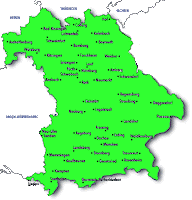
In December of 1914, two men, Vladimir Jabotinsky and Joseph Trumpeldor, began spreading the idea of having a military unit, comprised of Jewish volunteers to fight against the Turkish army in Palestine in World War I. By the end of 1915, over 500 hundred volunteers were in training in Egypt.

Although the British military commanders were opposed to the idea, Jabotinsky pressed forward and in August of 1917, the regiment was officially announced. The unit, the 38th Battalion of the Royal Fusiliers include the British volunteers and a large number of Russian Jews. Then in April of 1918, it was joined by the 39th Battalion of the Royal Fusiliers, of which more than half were volunteers from America. Another regiment, the 40th Battalion of the Royal Fusiliers was added later. This regiment was comprised mostly of Palestinian Jewish refugees. Included in this group were men such as David Ben Gurion, Levi Eshkol and Itzak Ben Zvi.
In June of
1918, the 38th Battalion was sent to Palestine, where they fought for the liberation of Israel from Turkish occupation. Their most famous battle may have been the
Battle of Megiddo, perhaps the most decisive victories of the Ottoman front. The photo below (copyright of Philip Walker) shows some of the legion.

The Legion's mission, was to cross the
Jordan River, and this they did. Finally in late
1919, the Jewish Legion was reduced to one Battalion, known as
The First Judeans.
The Men of the Legion
Although much has been written about these great men, at times I am still surprised by the great genealogical records that can be found. In the records of the Judah L. Magnes Museum in Berkeley, California (FHL film #1031329 item #9), some of the biographies of the men of The Jewish Legion can be found. These are the biographies of about 40 of the men, all who returned from war and settled in California.
Men like Issac Eichonon Bloch of the 38th Regiment.

Like the others he left his family as he went to war. Below is the
1911 English Census, with him living in the home of his father,
Rabbi Gustav Bloch.

The fact that he is in the 38th Regiment, is no surprise as he is living in England. Those in the 39th Regiment, such as Roman Adolph Freulich (shown below) were in America when they volunteered.

Originally from
Poland, he immigrated to the United States in
1913. He returned after the war to California and began a very successful career in the movies industry. The
1930 census below, shows him living with his wife in Los Angeles.

These men risked everything, for that which was truly important to them. How nice it is that the records of the Legion continue to be cared for.
 Congregation Beth Israel of Portland, Oregon was established in 1858, before Oregon was even a state. In 1859 they built their first synagogue. That synagogue was small and modest, and was replaced in 1888 by a much larger building, which itself was destroyed by fire in 1923. Finally that synagogue was replaced by a new structure in 1928.
Congregation Beth Israel of Portland, Oregon was established in 1858, before Oregon was even a state. In 1859 they built their first synagogue. That synagogue was small and modest, and was replaced in 1888 by a much larger building, which itself was destroyed by fire in 1923. Finally that synagogue was replaced by a new structure in 1928.


 The Legion's mission, was to cross the
The Legion's mission, was to cross the 
























